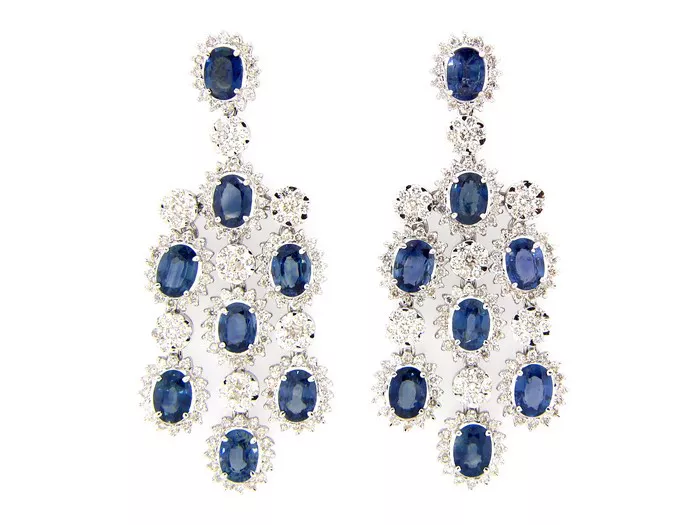Earrings are one of the most popular forms of jewelry, adorning ears in various shapes, sizes, and weights. While their aesthetic appeal is undeniable, the weight of earrings can significantly impact both comfort and ear health. In this article, we will explore what qualifies as a heavy earring, the factors influencing earring weight, the potential risks associated with wearing heavy earrings, and tips for selecting and managing them.
Factors Influencing Earring Weight
Several elements contribute to the overall weight of an earring:
1. Material
The material from which earrings are made plays a crucial role in determining their weight. Precious metals like gold and platinum are denser and heavier compared to lighter metals such as aluminum or titanium. Additionally, materials like wood, plastic, or resin are considerably lighter, making them more comfortable for extended wear.
2. Design
The design intricacies of an earring, including its size, shape, and the inclusion of additional elements such as gemstones, beads, or charms, can significantly add to its weight. Larger and more elaborate designs tend to be heavier than minimalist styles.
3. Gemstones and Embellishments
Earrings adorned with gemstones, pearls, or crystals can be substantially heavier than plain metal ones. The type, size, and number of stones used can all contribute to the overall weight. For instance, a pair of chandelier earrings with multiple gemstones will weigh more than simple stud earrings.
4. Construction
The way earrings are constructed also impacts their weight. Hollow designs or those made with thinner metal sheets are lighter compared to solid metal constructions. Similarly, earrings with intricate filigree work or open spaces weigh less than solid, dense designs.
Determining Earring Weight
The weight of earrings is typically measured in grams. While there is no universally accepted threshold for what constitutes a “heavy” earring, a general guideline is that earrings weighing more than 7-10 grams each are considered heavy. This threshold, however, can vary based on individual comfort levels and tolerance.
Personal Tolerance
Individuals have varying levels of tolerance for earring weight. What might be heavy for one person could be perfectly comfortable for another. Factors such as ear lobe strength, piercings’ placement, and previous experience with heavy earrings can influence personal tolerance.
Occasion and Duration
The context in which earrings are worn also affects their perceived heaviness. Earrings that feel manageable for a short event might become uncomfortable when worn for an entire day. Therefore, the occasion and expected duration of wear are essential considerations.
Risks of Wearing Heavy Earrings
While heavy earrings can be stunning and make a bold fashion statement, they come with potential risks that wearers should be aware of.
1. Ear Lobe Damage
Prolonged wearing of heavy earrings can cause ear lobe stretching, tearing, or even permanent deformation. The weight exerts continuous pressure on the piercing hole, potentially elongating it over time. In severe cases, the ear lobe may tear, requiring surgical repair.
2. Pain and Discomfort
Heavy earrings can cause immediate discomfort, including pain, redness, and swelling. The strain on the ear lobe can lead to headaches and neck pain as well, especially if worn for extended periods.
3. Infection Risk
Wearing heavy earrings can increase the risk of infections. The constant pressure and movement may irritate the piercing, leading to inflammation and making it more susceptible to bacterial infections.
4. Allergic Reactions
Some individuals may develop allergic reactions to the materials used in heavy earrings, particularly if they contain nickel or other allergenic metals. This can cause itching, redness, and swelling.
Tips for Selecting and Managing Heavy Earrings
If you love the look of heavy earrings but want to avoid the associated risks, here are some tips to help you manage their weight and wear them comfortably.
See Also: In Which Finger Gomed Should Be Worn for Female
1. Opt for Lightweight Alternatives
Choose earrings made from lighter materials such as aluminum, resin, or wood, which offer substantial designs without the added weight. Hollow or filigree designs can also reduce weight while maintaining a bold appearance.
2. Use Support Accessories
There are various accessories designed to support heavy earrings and distribute their weight more evenly across the ear lobe. Ear lobe support patches or tapes can be applied behind the ear to provide additional support and reduce strain.
3. Alternate Earrings
Avoid wearing heavy earrings daily. Alternate between heavier and lighter earrings to give your ear lobes a break and prevent stretching or damage. Reserve heavy earrings for special occasions or shorter durations.
4. Choose Secure Fastenings
Opt for earrings with secure fastenings, such as screw-backs or lever-backs, which provide better support and reduce the risk of the earring pulling or falling off. Avoid heavy earrings with flimsy or loose fastenings.
5. Monitor Your Ears
Regularly check your ear lobes for signs of stretching, redness, or irritation. If you notice any discomfort or changes, give your ears a break from heavy earrings and consult a healthcare professional if necessary.
6. Maintain Ear Hygiene
Keep your piercings clean and free from infections by following good hygiene practices. Clean your earrings and piercings regularly with a suitable antiseptic solution, and avoid wearing earrings in unclean or potentially harmful environments.
7. Professional Advice
If you have concerns about wearing heavy earrings or experience persistent pain or damage, seek advice from a professional piercer or dermatologist. They can provide guidance on safe earring practices and potential treatments for ear lobe issues.
Conclusion
Heavy earrings can be a stunning addition to your jewelry collection, offering a bold and fashionable statement. However, it’s essential to understand what constitutes a heavy earring and be aware of the potential risks associated with wearing them. By considering the factors influencing earring weight, understanding personal tolerance levels, and following practical tips for managing heavy earrings, you can enjoy their beauty without compromising your ear health. Prioritizing comfort and safety ensures that your love for earrings remains a delightful and pain-free experience.

